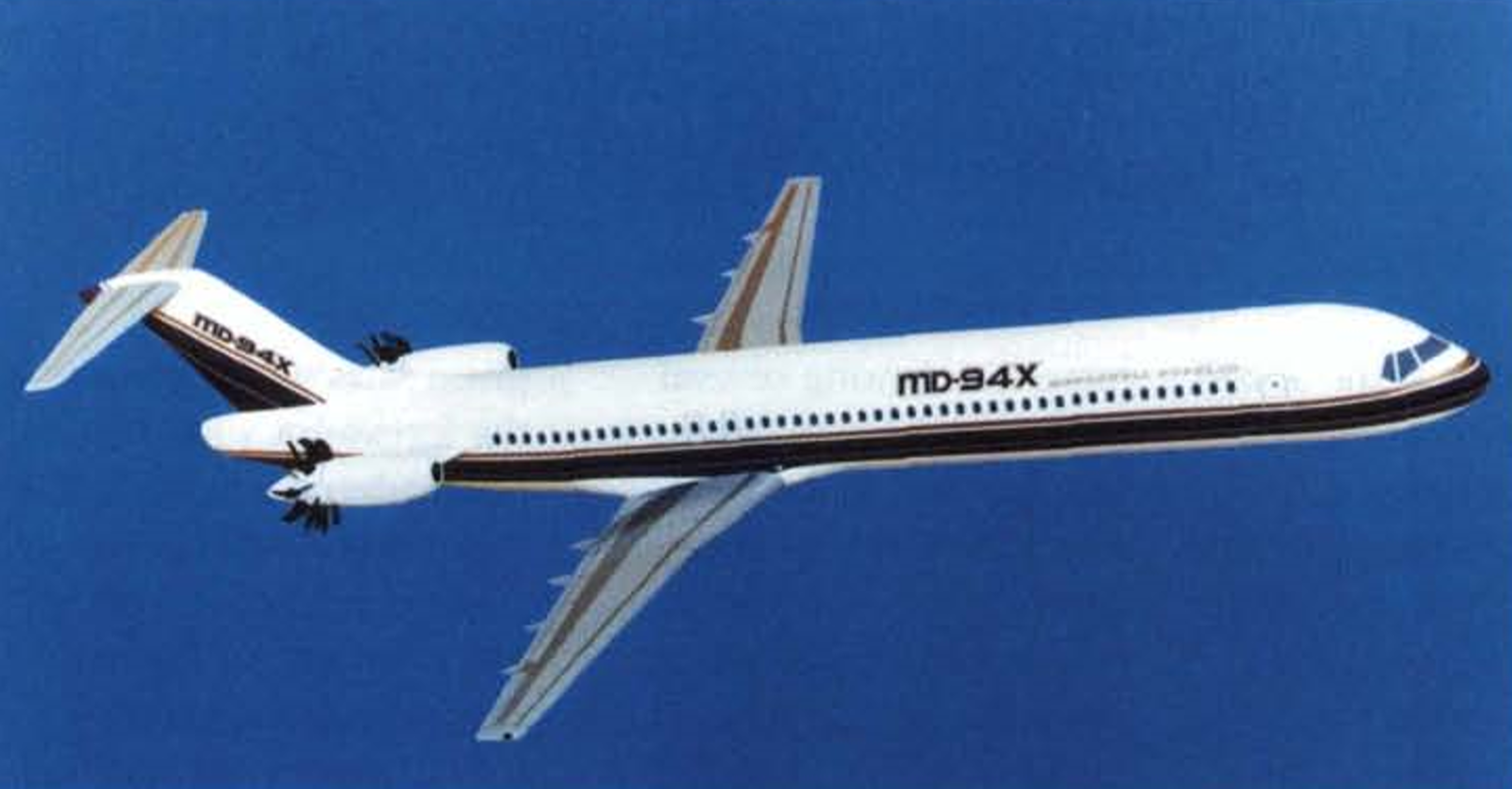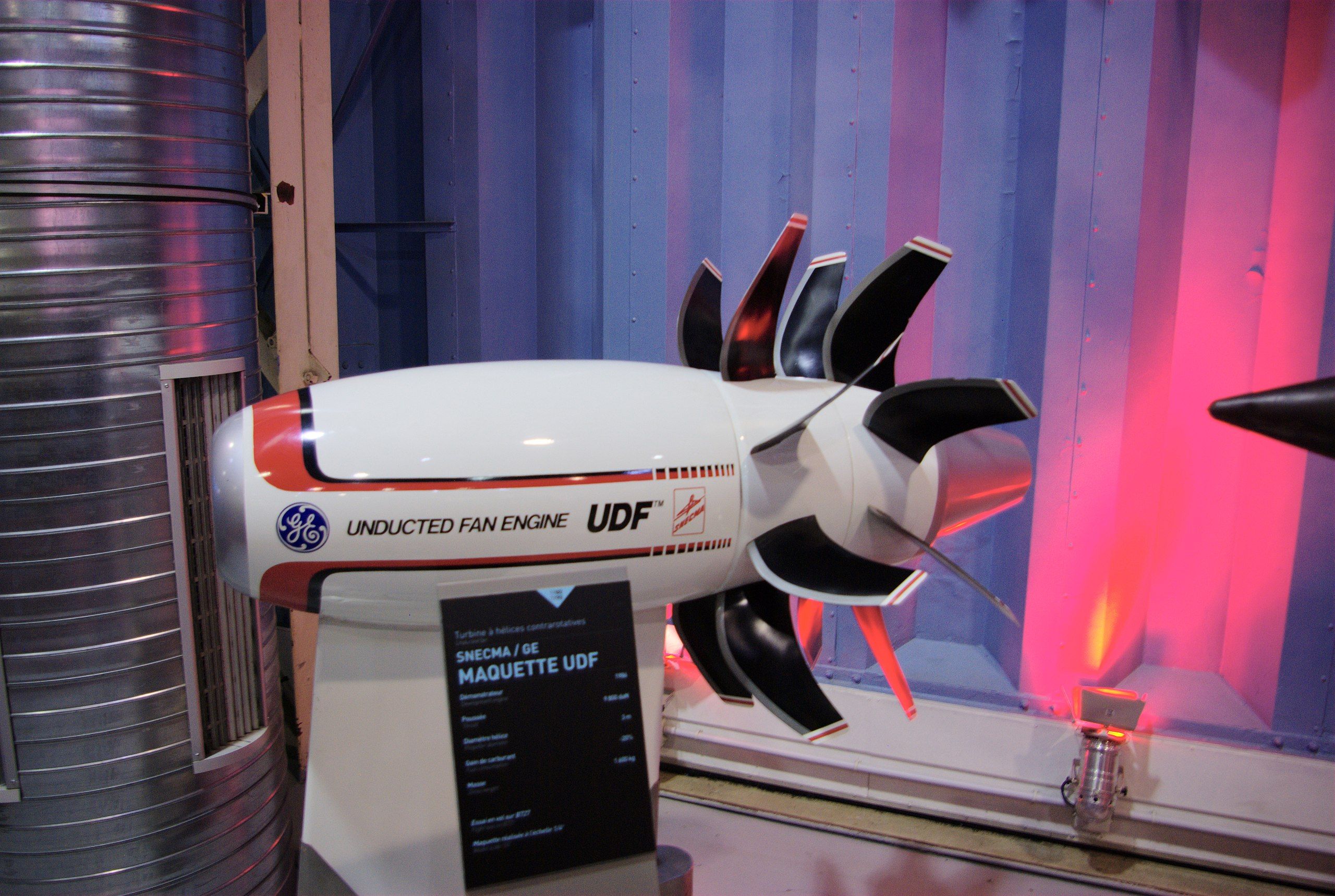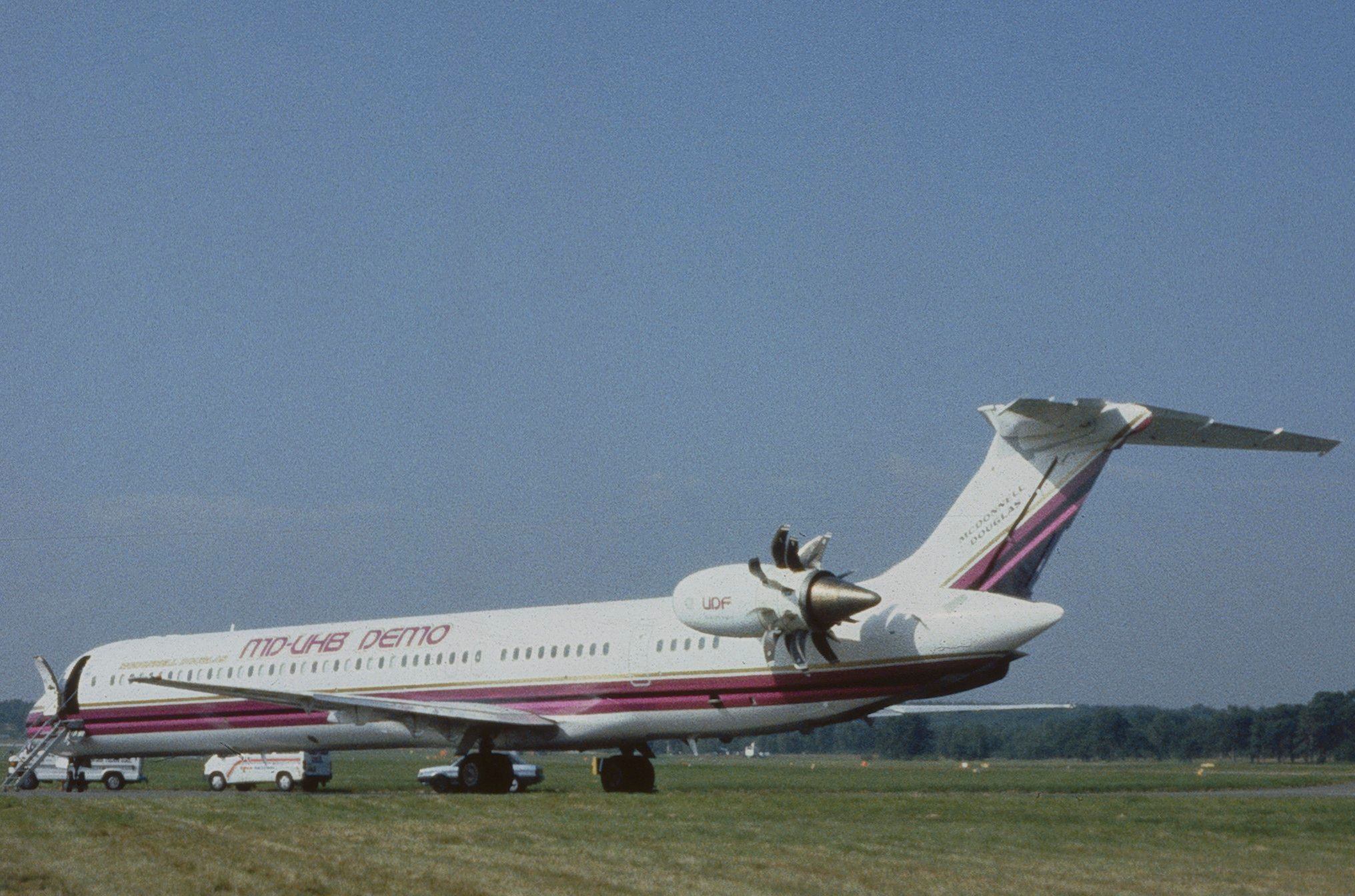Although McDonnell Douglas
produced multiple versions of the MD-90, including the standard -30, -30ER, and -30IGW, the company proposed many more. According to the Los Angeles Times, they considered shorter variants, like the -10, which would hold around 114 passengers, and the -40, an extended option with up to 180 seats. However, there was one very peculiar design that the aircraft manufacturer poured research into: the MD-94X, featuring propfan engines.
A type of powerplant that was expected decades ago to have a major impact on the market, given its high efficiency and relative simplicity in comparison to other engines, the propfan could have been one of the industry’s biggest technological leaps. However, a variety of factors eventually limited the potential of the propfan engine, which resulted in most experimental projects being eliminated.
The MD-94X, which promised unheard-of efficiency gains that exceeded nearly 30%, aircraft could have had a long-term future had jet fuel prices remained high. Nonetheless, a reduction in fuel prices let the manufacturer cancel the program. Let’s take a deeper look at this unique aircraft and everything it has to offer.
A new aircraft with a new kind of engine
Hoping to bring innovation, compete with Boeing’s potential 7J7 propfan aircraft, and lower fuel costs, McDonnell Douglas worked with General Electric to fit their in-development GE36 unducted fan (UDF) engine on a derivative of the MD-80. GE’s GE36 was based on work initiated by NASA and was the engine of choice for use on the 7J7 mentioned above, which would replace the 727. It’s worth noting that the Pratt & Whitney/Allison 578-DX propfan engine was considered for the proposed MD-90 aircraft, though due to various complications, GE won out.
A critical factor in developing a GE36 demonstration model was newly developed composite materials with intense strength, facilitating the production of thin yet robust curved engine blades. A prototype engine was previously fit onto a Boeing 727 and flown dozens of times. However, moving forward with formal and very hopeful plans, McDonnell Douglas and GE sunk nearly $1.2 billion into the project between the engine and aircraft.
A unique concept with differences from traditional engines
An open-rotor engine like the propfan is a hybrid powerplant that attempts to combine the performance of a turbofan jet engine with the fuel efficiency of a turboprop. With exposed fan blades, the engine offers a very similar structure to turbofans with the noticeable lack of a duct to funnel air.
Propfan engines, like those equipped on the MD-94X, feature shorter fan blades that are heavily twisted and are often made from advanced lightweight materials like composites. These blades resemble propellers and can achieve similar speeds to jet engines but at a fraction of the fuel cost. These engines will often include contra-rotating blades, which boost efficiency and help balance aerodynamics. The exposed fan blades could even make these engines easier to clean and overhaul.
One can immediately tell that there are a handful of key differences between propfan engines and turbofans. The four most important of which are as follows:
- Blade configurations
- Ultra-high bypass ratios
- Middle-of-the-road operating speeds
- Noise levels
While we have already discussed the unique blade configuration on propfan engines, these powerplants also come along with high bypass ratios, which correlate to higher operating efficiency. Furthermore, these kinds of engines push aircraft to mid-range speeds, which fall short of those for turbofan-powered aircraft but exceed turboprop numbers. Lastly, propfans also come along with higher noise levels.
Across the board, propfan engines did look promising and could have been an appealing way for airlines to reduce fuel costs. With this in mind, McDonnell Douglas quickly set out to build an aircraft powered by propfans. The American manufacturer was not the only one to notice the potential of these engines, with many McDonnell Douglas competitors also sinking funding into research on propfan-powered experimental aircraft.
Much progress made in just one year
The aircraft would seat 160 to 180 passengers depending on cabin configuration and feature advanced technologies for the time, including canard nose planes, side-stick flight control, and more. On April 5, 1987, the first testbed MD-80 involved with the project was fitted with a proof of concept GE36 on its left side, while the right still featured a conventional jet engine. This way, the two companies could collect data and compare differences in cabin noise, vibration, and, most importantly, fuel efficiency, the hallmark promise of this engine type.
With its mismatching engines, the experimental aircraft took to the skies for its first research flight on May 18, 1987. They started with two eight-blade unducted fans on the GE36, then tested with ten blades on the front fan and eight on the aft. The latter configuration became problematic, so McDonnell Douglas and GE swapped back to the original design before pushing forward with more flights. Despite the mechanical issues, they were confident that the aircraft could obtain certification by 1992.
An anticlimactic ending
By March 25, 1988, testing was complete, and the experimental MD-80 obtained 165 hours over 93 flights, traveling at speeds up to Mach 0.865 and as high as 37,000 feet. With their results, demonstration aircraft, and confidence, the two companies flew the MD-80 across North America to the UK, where it would debut publicly at the 1988 Farnborough International Airshow. Part of their plan was to begin marketing to airlines while providing demonstration flights, but this is about where the story ends.
According to the AP, the promises of fuel consumption reductions of nearly 40% weren’t enough to convince a single customer to purchase the airliner. This lack of sales may be because the problem had solved itself. Adjusting for inflation, the cost per barrel of oil in May 1980 was about $140, and five years later, it was still high, at around $83.
However, the price dropped significantly, to $30, in the coming months and stayed low for years. The necessity to invest in brand-new engine tech with potential unforeseen mechanical and safety issues in the years ahead was no more, and as John Wolf, MD’s then-Vice President said as follows:
“Our customers indicated they were not interested in buying it.”




